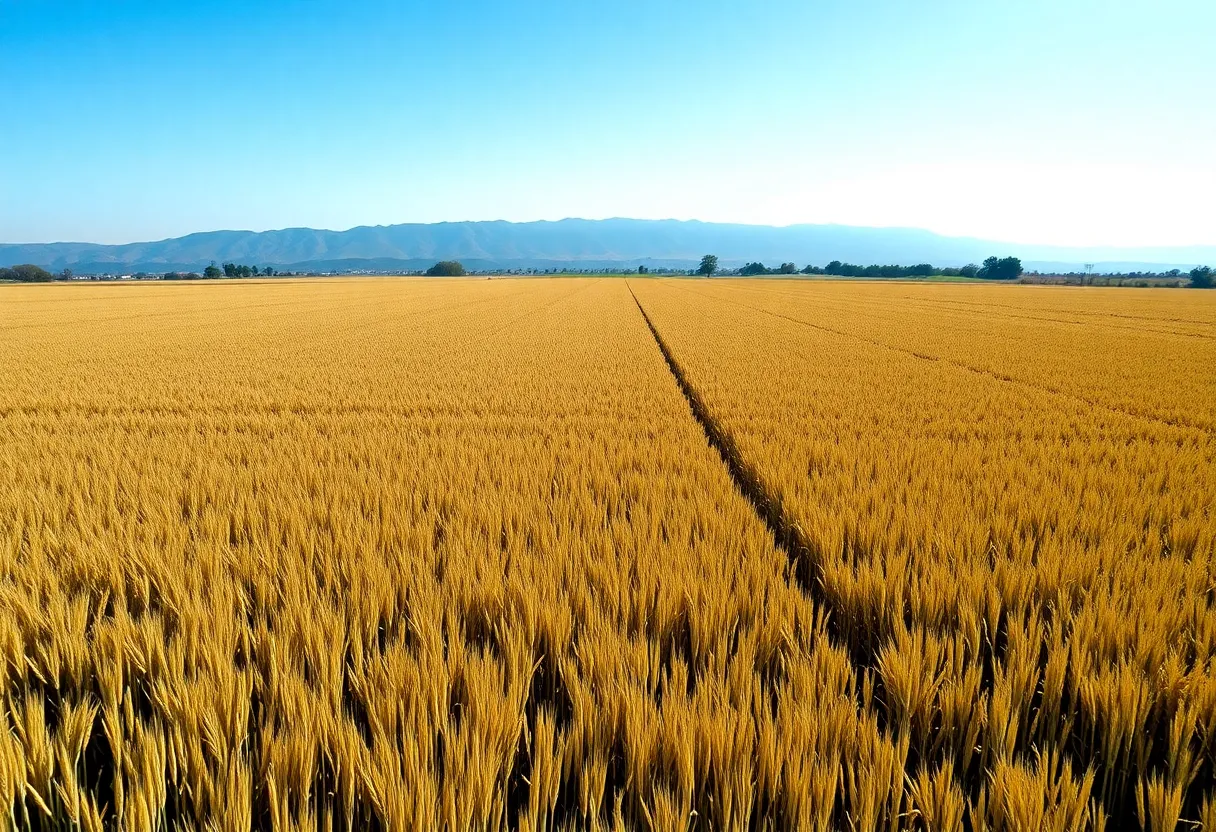California, October 23, 2025
News Summary
California’s severe drought is critically affecting the rice industry, with 300,000 acres of fields left unharvested this year. The state’s rice sector, valued at $5 billion, faces challenges in water management as farmers adapt to the challenging conditions. Innovative practices and conservation efforts are being implemented to support both agricultural sustainability and the ecosystem. As the drought continues, collaboration among rice growers becomes essential for the future viability of the industry.
California’s ongoing drought is severely impacting the rice industry, a vital segment of its multi-billion-dollar agricultural sector. The effects have left approximately 300,000 acres of rice fields unharvested this year, causing concern and highlighting the need for innovative water management practices among farmers.
The California rice industry, valued at an estimated $5 billion, is primarily concentrated in the Sacramento Valley, which is known for being one of the most productive rice-growing regions in the nation. Rice farming in California is characterized by a blend of tradition, innovation, and hard work. Rice growers utilize tandem pup trailers, influenced by both tradition and regulatory requirements, to facilitate their harvest.
Water management is crucial for the success of rice farming in California. Farmers focus on timing, efficiency, and sustainability to ensure optimal crop yields. The Glenn-Colusa Irrigation District has emphasized infrastructure updates for effective water allocation amid the dire drought conditions. This includes various river restoration projects aimed at enhancing water delivery for agricultural use.
The California Rice Commission (CRC) plays an essential role in supporting rice growers and millers, advocating for initiatives related to pesticide regulation, wildlife habitat preservation, and public education on agriculture. Approximately 25,000 jobs are generated through the rice industry, underscoring its importance to the state’s economy.
In light of the drought, many farmers have adopted sustainable practices that support the ecosystem, particularly for migratory birds along the Pacific Flyway. Programs such as “Fish Food” aim to bolster salmon populations by introducing zooplankton from rice fields into waterways, thereby improving the food sources for juvenile salmon.
Farmers are facing challenging decisions as they adapt their planting strategies due to the persistent drought conditions, now in their third year. For instance, farmers like Kurt Richter in Colusa have dramatically reduced their acreage, planting only 1,300 acres of rice instead of the usual 5,000 due to severe water shortages. On a more positive note, farmers in Butte County have reported sufficient water to plant more rice than in the previous year, showcasing some variation in water availability across regions.
The California Rice Commission is actively promoting conservation efforts to manage water shortages’ impacts on both farmers and wildlife. Crop insurance is providing some financial relief to affected farmers; however, long-term sustainability remains a pressing concern as uncertainties about water availability continue.
Additionally, California’s rice fields serve as surrogate wetlands, playing a crucial role in supporting various wildlife species, especially as natural wetlands decrease in availability. Collaboration among rice growers is essential as they face ongoing challenges and seek to ensure a viable future for their industry.
While the drought presents a formidable challenge, the rice industry’s commitment to innovation and sustainability will be key in navigating these tough conditions.
FAQs
What is the economic value of the California rice industry?
The rice industry generates an estimated $5 billion in revenue and provides approximately 25,000 jobs in California.
What challenges are California rice farmers facing due to drought?
Drought conditions severely affect rice planting across California, with about 300,000 acres of rice fields expected to remain unharvested this year.
How are rice growers working to conserve water?
Farmers focus on water management strategies that emphasize timing, efficiency, and sustainability, and some have adopted practices to help migratory birds.
What role does the California Rice Commission play in addressing these issues?
The California Rice Commission advocates for rice growers and millers, addressing pesticide regulation, wildlife habitat, and public education.
What innovative programs support the ecosystem and wildlife?
The “Fish Food” program aims to support salmon populations by bringing zooplankton from rice fields into the river, enhancing food sources for juvenile salmon.
Key Features of California’s Rice Industry and Drought Impact
| Feature | Details |
|---|---|
| Economic Impact | Estimated $5 billion in revenue, approximately 25,000 jobs generated |
| Drought Effects | 300,000 acres of rice fields expected to remain unharvested this year |
| Water Management | Emphasis on efficiency, sustainability, and timing |
| California Rice Commission Role | Advocates for growers, addresses pesticide regulation and wildlife habitat |
| Conservation Initiatives | Programs like “Fish Food” to support ecosystem and migratory birds |
Deeper Dive: News & Info About This Topic
- USA Rice Daily
- Wikipedia: Rice
- KCRA News
- Google Search: California rice industry
- Sacramento Bee
- Google Scholar: California rice farming
- Davis Enterprise
- Encyclopedia Britannica: California agriculture
- San Francisco Chronicle
- Google News: California rice drought

Author: STAFF HERE SAN DIEGO WRITER
The SAN DIEGO STAFF WRITER represents the experienced team at HERESanDiego.com, your go-to source for actionable local news and information in San Diego, San Diego County, and beyond. Specializing in "news you can use," we cover essential topics like product reviews for personal and business needs, local business directories, politics, real estate trends, neighborhood insights, and state news affecting the area—with deep expertise drawn from years of dedicated reporting and strong community input, including local press releases and business updates. We deliver top reporting on high-value events such as Comic-Con International, San Diego County Fair, and San Diego Pride Festival. Our coverage extends to key organizations like the San Diego Regional Chamber of Commerce and United Way of San Diego County, plus leading businesses in biotechnology, healthcare, and technology that power the local economy such as Qualcomm, Illumina, and Scripps Health. As part of the broader HERE network, including HEREAnaheim.com, HEREBeverlyHills.com, HERECostaMesa.com, HERECoronado.com, HEREHollywood.com, HEREHuntingtonBeach.com, HERELongBeach.com, HERELosAngeles.com, HEREMissionViejo.com, and HERESantaAna.com, we provide comprehensive, credible insights into California's dynamic landscape.





